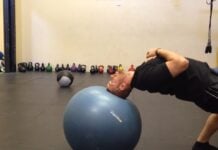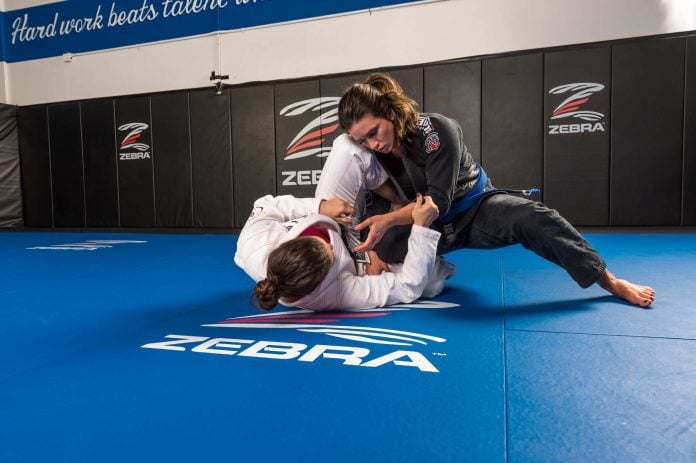
What are the most important Jiu-Jitsu positions? The answer is much simpler than you think. While it will involve every position you know (and perhaps don’t know of) it is still going to be exceedingly simple. The most important positions in BJJ are top and bottom. As long as you are able to organize everything you do around those two aspects of positioning relative to the ground, you will be able to make sense of all of them. Read on.
Looking at Jiu-Jitsu positions through the prism of top and bottom seems like an oversimplification. However, the way to understand BJJ is by simplifying it, not trying to overcomplicate things as people usually do. So, while you are probably aware of all the usual and perhaps a few of the unusual BJJ positions, understanding how it all works in the grand scheme of things will not require you to learn the mechanical nuances of every variation of every position – that I si impossible. instead, you need a “string theory” of BJJ, something that explains how everything works in order to be able to organize all those fancy guards, passes, pit stops, etc. That is exactly what we will provide for you in this article.
The Evolution Of Jiu-Jitsu Positions
Back in the day, when Brazilian Jiu-Jitsu was simpler, one of the reasons for that was that were much fewer positions than we have today. Back then, people had a closed guard, a simple half guard, and perhaps a version of the open guard that they didn’t;’t really perceive as a guard. Side control, mount, and back were the positions you were hunting for, and the entire game revolved around that. That said, the principle of top and bottom still applied back then.
The first evolution of Jiu-Jitsu was through the guard. Apart from the half guard, which was an invocation forced via an injury, all the open guards happened as part of much-needed experimentation. It was simple – people started standing up and destroying the closed guard, and the bottom player had to evolve. Enter spider guard, De la Riva, the tripod guard, and other early open guards.
In turn, this led to the evolution of more passing systems and scenarios to try and counteract the new bottom positions that evolved. However, when people saw they could get away with pretty much everything while experimenting, the door was now open. Positions like the turtle, that were deemed horrible to be in, now turned into guards, and the ways in which you can hold someone from the top changed to accommodate the growing number of escape and counters. With leg locks, and athleticism starting to play a huge role, the entire game has changed, and we have never had more Jiu-Jitsu positions than we do today. And still, they all boil down to being either a top or bottom position.
Making Everything Simple Again
Chris Haueter has it right. It is not the first time I’ve written about this, but boy, does it all make sense. His take on things is simple – be the person on top. Why? Because it is easier to be there, the bottom person has to work to achieve anything, and all the points are awarded to folks that are on top. Easy.
There are, of course, finer points to all of this. When you’re up against someone’s guard, you are on top but haven’t earned any points yet. And still, you have the advantage. Why? Well, the bottom person will only get points if they end up on top (sweep). You will get points for passing the legs. You have the easier task. So, when you’re on top, as Haueter says, stay on top.
Conversely, when you are on the bottom, try and prevent the top person from passing your legs (a guard you shall not pass). Then, aim to get back up. As fun as doing guards and some other bottom Jiu-Jitsu positions might be, points-wise you would like to be on top. the reason for that, and for the points awarded to each top portion is because of potential damage you can cause from there. With BJJ originally an art that was used in Vale Tudo and NHB fights, positions where you can trike and not get hit were considered the most desirable, for obvious reasons. The points awarded to this day have their roots in those same rulesets, and it makes a lot of sense.
Key Top Positions
Let’s take a look at a few of the key top Jiu-Jitsu positions, and what you need to know about each and every one of them. Basically, the common thing that is true for all of them is that you can’t hold any of them for an indefinite amount of time. Not possible, forget about it. People will have the chance to escape, no matter how good you are at holding a position. All they need is time.
The second thing to keep in mind is the actual “string theory” of Brazilian Jiu-Jitsu. What are you fighting for from those e top positions? Well, since you’re on top and you have the advantage, as we saw earlier, your task is simple – remain in the inside space of an opponent that you have already conquered when achieving your point awarding top position. What is the inside space? Everything in between the shoulder and the knees of your opponent is the inside space you are hunting for.
Side Control
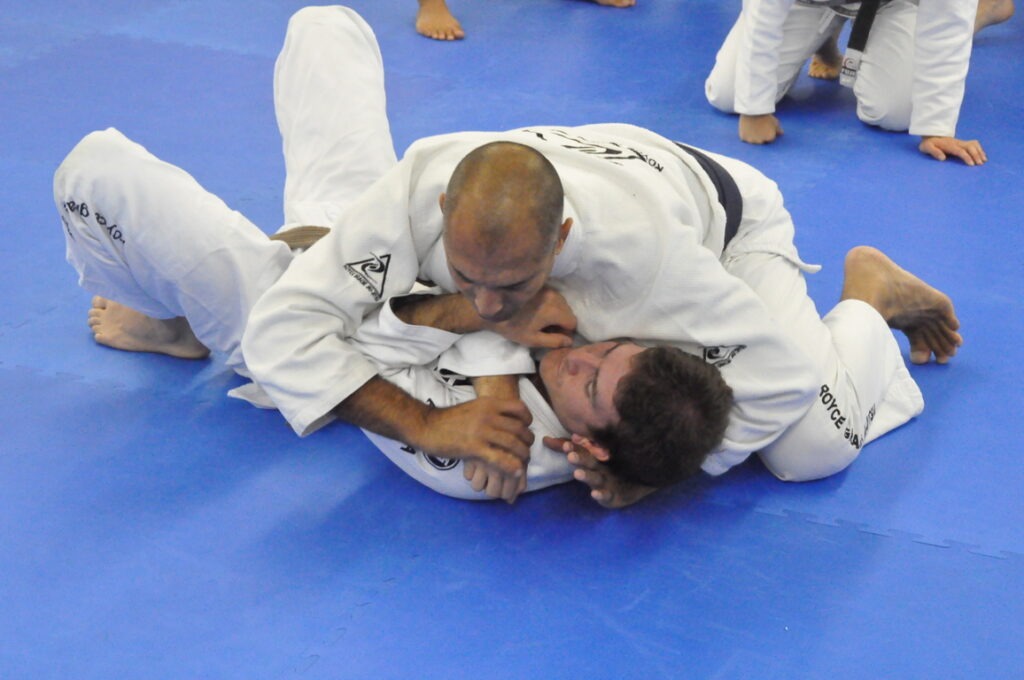
Positioning: There are plenty of different side control variations (100 kilos, wrestling side control, twister side control, Kesa Gatame, etc..). In any of them, the goal is the same – keep your chest in the inside space of the opponent, and try to keep the opponent’s elbows open (away from their ribs). IF you can also turn their head to one side you’ll be in cruise control.
Mindset: When in side control, your way of thinking would be to progress. Use the position to gain even more control before you look for a submission. Any of the next top Jiu-Jitsu positions are awesome options, but if submission presents itself, you can go for it. Just make sure you don’t lose top position, or get drawn back to a guard.
Knee On Belly
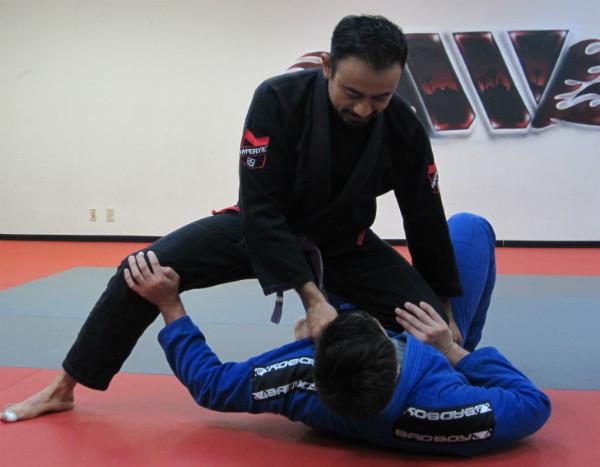
Positioning: Your shin should go across the belly of an opponent. following the belt. The knee should protrude on the far side, and your foot should be hooked on the near side of the hip. Neither should be touching the ground. The other leg is posted for balance, and you would aim to keep your head over the nearside shoulder. Finally, try and resist holding your opponent with your grips – instead, have your arms free to post and adjust.
Mindset: Go to mount. That should be the first task you have in mind if you’re in the knee on belly and have collected your points for it. Alternatively, if you can hit an armbar or one of the nasty lapel chokes available, you could go for them as they keep you in top position. So do leg locks, to a certain extent, but only if you are comfortable with them.
Mount
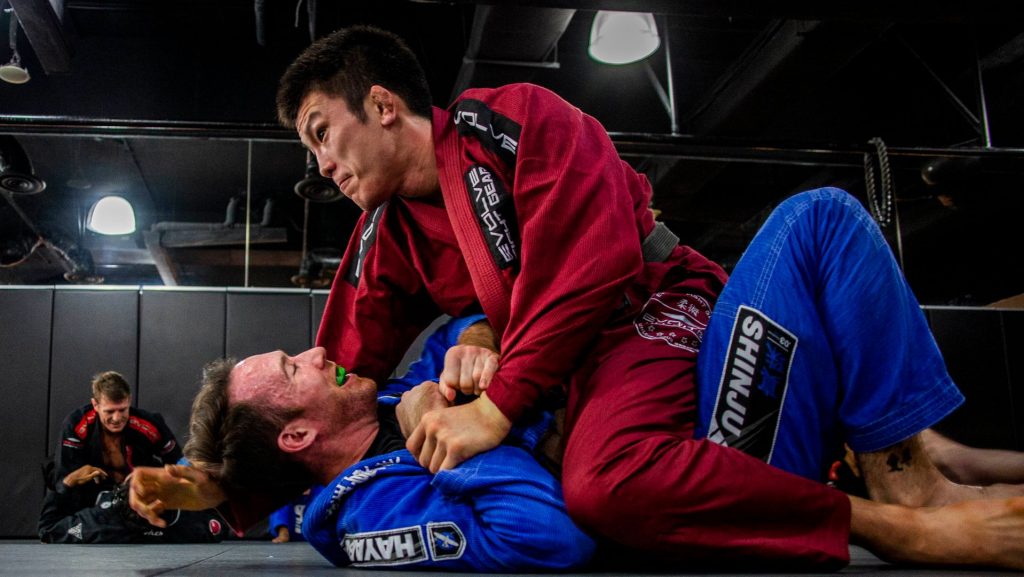
Positioning: The mount also has several variations You can be in low, medium, high and S-mount for the most part. There’s also a technical mount, and “vegan” mount for all the leg lockers out there. The positioning is simple – your hips are in the inside space of an opponent. IN fact, your entire body is in there, which is why this is one of the best Jiu-Jitsu positions you can get to. Submissions are readily available, especially in terms of arm locks and chokes.
Mindset: Submit. When you are in mount you want to stay there and finish. An alternative would be to go for the back, as the only other possible position of maximal control. Apart from that, however, you should try and not regress back to other positions that came before the mount.
Back Control
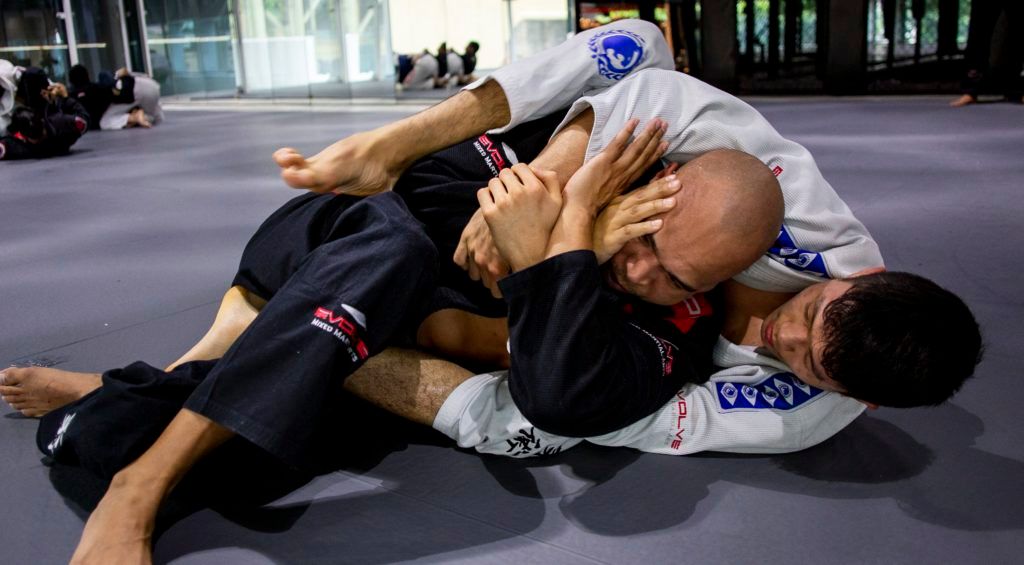
Positioning: The back position also has several variations, mostly in terms of leg positioning. You can use hooks, body triangles, post rear mount etc. The well-known seatbelt grip provides upper body control, with one arm over the shoulder and the other under the op[posite side armpit. In any case, the goal is to control the hips and shoulders from rotating towards you.
Mindset: Submit, preferably via choke. You can go direct or use the collars or lapels. Armlocks is also a possibility but will require adjusting your position. There are no next position to think about transitioning into, but you could consider some in-between Jiu-Jitsu positions to help you out in submitting.
A Word On Passing
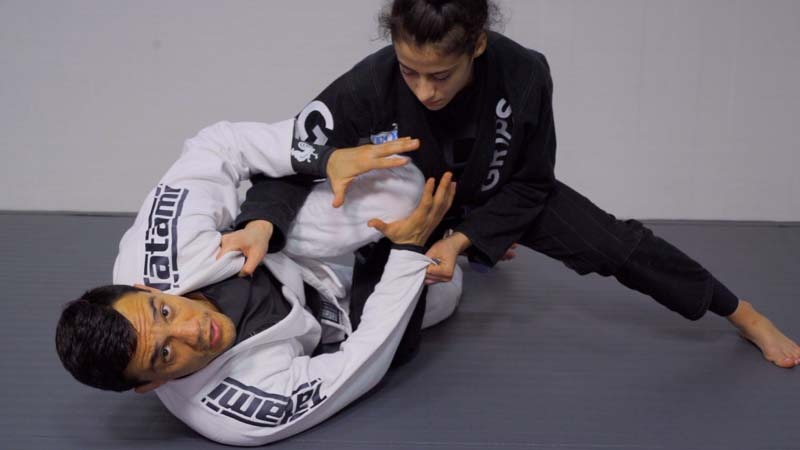
Positioning: Passing is not easy to portray universally, given the number of different guard positions. And yet, there are ground rules. Keep your elbows close to your body, keep your head over your butt and try to keep your feet and hips in a straight line. From there on, you can proceed to break a guard’s structure and conquer inside space.
Mindset: Break the guard. In terms of Jiu-Jitsu positions, nothing provides more variety than guards. Unless you break their structure, you won’t be able to pass the legs and conquer inside space. The Holy thing to consider is not fighting against a guard but rather against legs.
Understanding Bottom Jiu-Jitsu Positions
The bottom positions, AKA guards, offer lots of options and lots of fun. The guard is the one thing that other grappling martial arts did not have before BJJ came along. To be honest, they still don’t as the guard remains a position-specific to Jiu-Jitsu. That said, the guard actually doesn’t provide any points, unless you use it to get the top position or hit a submission that ends the match then and there.
The Closed Guard
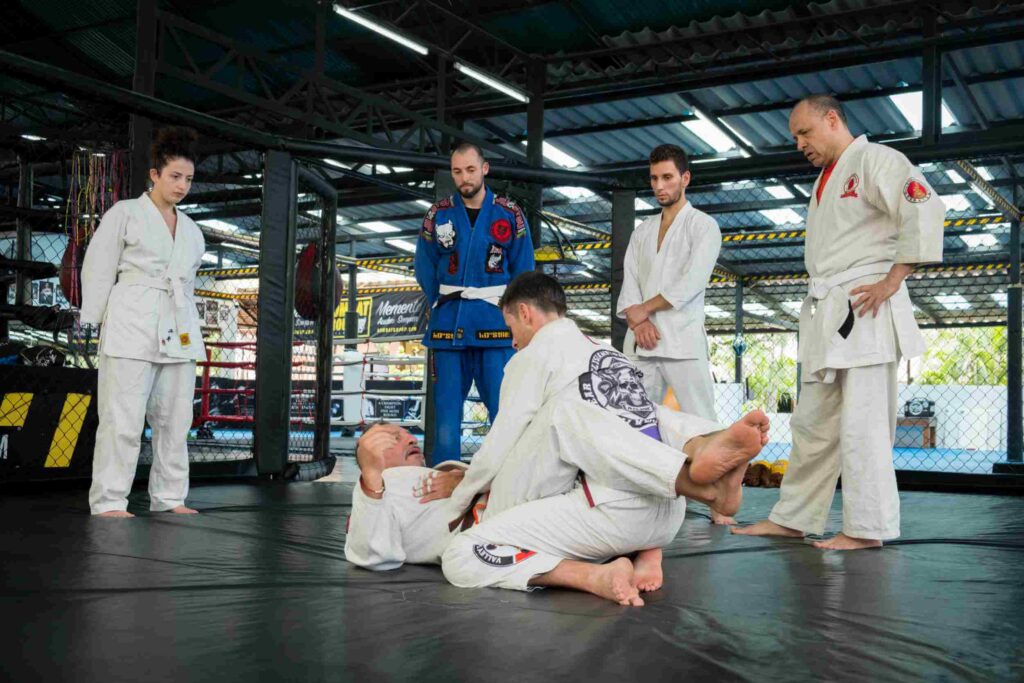
Positioning: You have inside space, retain it. As long as you keep your legs in the inside space, there’s no way for the top person to pass. Controlling the arms via your grips will further provide safety and allow you to get their posture broken, and start attacking.
Mindset: Slap on submission and use it to get to the top. If you think this way, you attack with a double attack from the get-go. In other words, you’ll either finish a triangle choke or end up in the mount with the possibility of a triangle still an option. BJJ 101.
Half Guard

Positioning: The most utilized of Jiu-Jitsu positions is also the most misunderstood one. it is not about the leg you are holding. You can have a knee shield, butterfly hook, z-guard, deep half guard, etc. The goal is staying on your side and using the top arm and leg to keep your inside space yours. Keep your elbows to yourself, and b be prepared to battle for different top leg configurations.
Mindset: Make them overcommit. No need to reach, people need to pass your legs. The moment they try, as long as you’ve set up, you can use their movement to sweep them depending on which side of the centerline their head is positioned. Conversely, you can submit them based on whether you have their upper or lower body in reach. The key here is patience.
Open Guards

Positioning: Have the right hooks. Every open guard has a passive hook (the leg that is keeping you attached to your opponent) and an active hook (the leg that is free and roaming). The first one is there to protect your inside space, the second one should conquer the opponent’s side space.
Mindset: Don’t let them pass. It seems defensive, but if people can pass you, then you can’t play guard. So, first, stay on guard, then think about attacking with double attacks.
Turtle
The turtle is one of the most interesting Jiu-Jitsu positions Until such time that you start to play it you won’t understand the power it has. It is the ultimate bottom p[position that will protect you from everything while offering more ways of getting on top than most guards.
Positioning: There are different ways to position yourself in the turtle, but one that really pays dividends is to keep your elbows in your hips, hands in front of the chin, forehead on the ground and feet sealed to the ground. The feet should be the first thing to change when you switch to offense and look to stand up, or switch to guard.
Mindset: Patience. You are impenetrable, but it won’t last forever. Timing is key, and you need to use your chance when the opponent is moving to get out of the turtle and get a top position of your own. Or a submission if you are crafty enough.
“In Between” Positions
These are curious and interesting and do have their place. However, these are also the Jiu-Jitsu positions that you need to understand quite deeply in order to play. Basically, you need to know not just how they work, but how they tie into the top and bottom positions that eventually lead to getting points or winning opportunities. Let’s go over some of the more common ones.
Ashi Garami
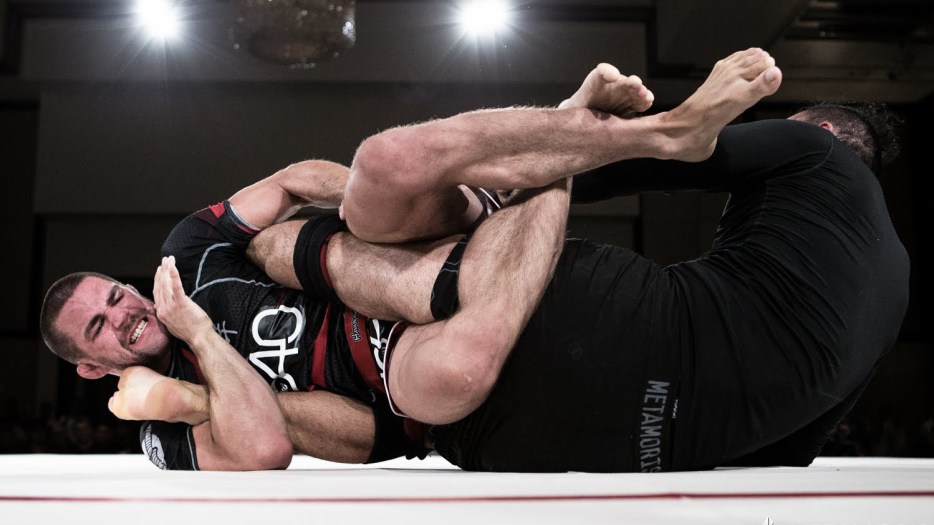
Positioning: The key with an Ashi Garami is controlling the hips. You need both of the opponent’s hips to be lower than yours, in order to even think about controlling the position. The knee line comes next, with their knee-deep in between the line that your knees make. Finally, you have control of both legs, mostly by using your grips, taking away the opponent’s chances of defense.
Mindset: Finish with a leg lock, preferably heel hook. If that fails, though, be sure you can either transition into a pass, to a sweep that will help you end up directly in a scoring top position.
The Truck

Positioning: You want to have your legs entangled around one of the opponent’s legs, while making sure their hips are resting on your belly. You control the other leg with your grips and you can use the position to submit with lots of leg locks, or transition towards the back or into a top position.
Mindset: Stay in the position to try and finish, most likely with a calf slicer. However, if this is not an option, go for the back first, before resorting to using the Turck to get back to top Jiu-JItsu positions.
Front Headlock
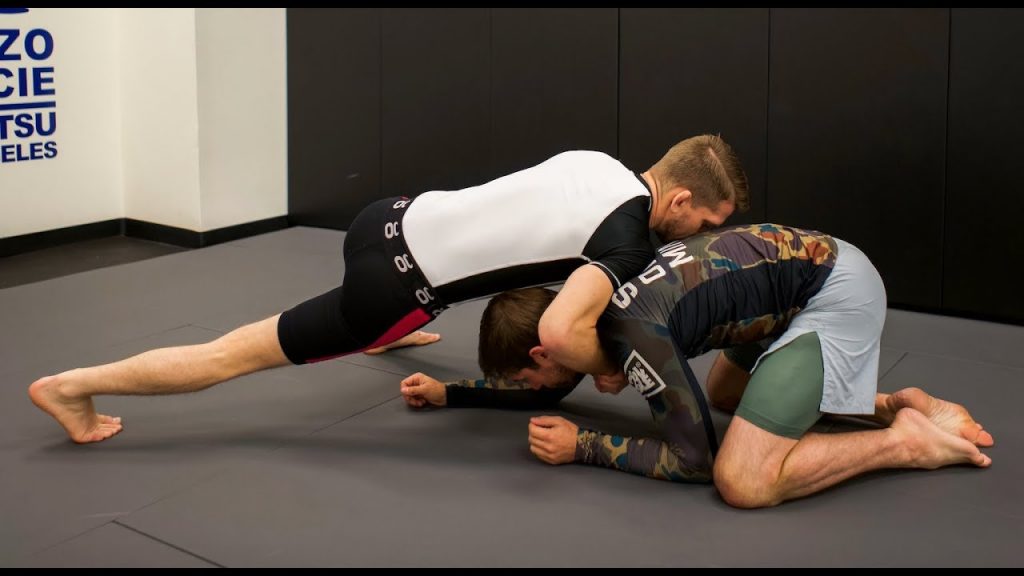
Positioning: Grips are everything. The front headlock is one of those Jiu-Jitsu positions with plenty of varieties and options, but it all boils down to the chin strap grip. Once you have the chin strap, your other arm should control the elbow of one arm, which is how you control the inside space, albeit indirectly. Without these two aspects of control, there’s no front headlock, regardless if you’re standing, versus a turtle or on the bottom playing guard.
Mindset: End up on top. Whatever you might think you can do from the front headlock, your primary goal should be to end up in a scoring top position. If you can do it while slapping on a choke, (which you can), then it is even better. However, submissions come second here at least if you want to get the most out of the position.
Submissions

Positioning: Any submission offers you control as long as you establish two things – tension and torsion. If you put the body part you are attacking under tension and you also twist it ever so slightly, you’ll be able to stay there for much longer than usual. Then you can think about finishing or consider follow-up options.
Mindset: Not going for a finish might be strange, but looking for tension and torsion will actually help you finish more submissions. Consider staying in a sub longer. So many more options will open up.
Wrapping Up
Jiu-Jitsu positions do not have to be complicated just because there are so many of them. A simple way to do so is to organize them in a simple system that makes sense. “Top and bottom” is as simple as things get. As long as you are aware of what the “string theory” or task of every position is, you’ll have no trouble achieving any gaol from any given position in BJJ.












